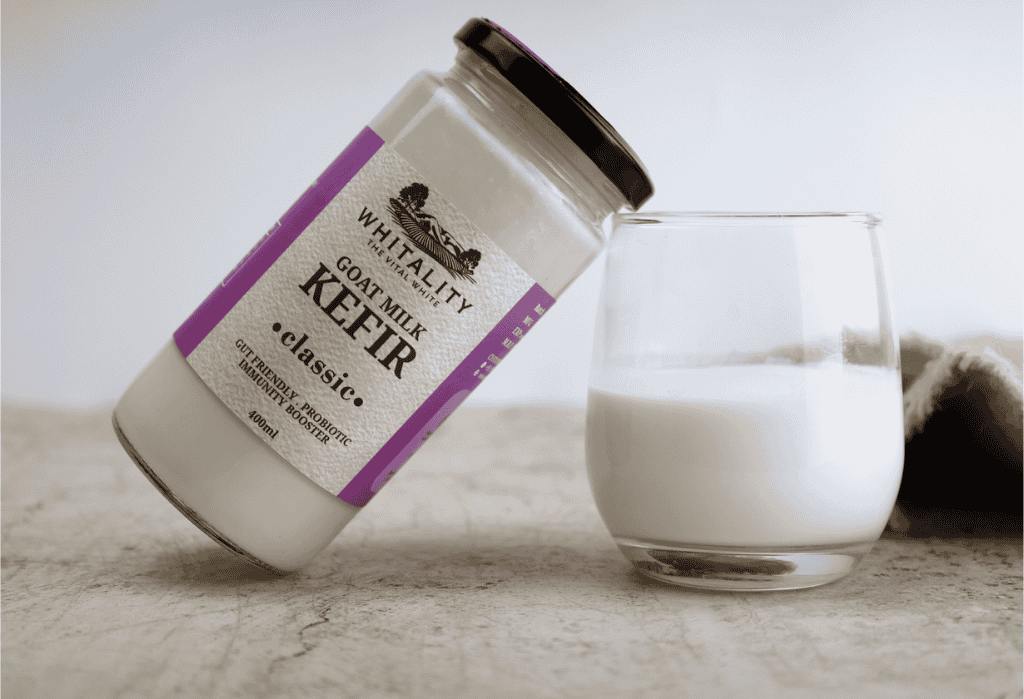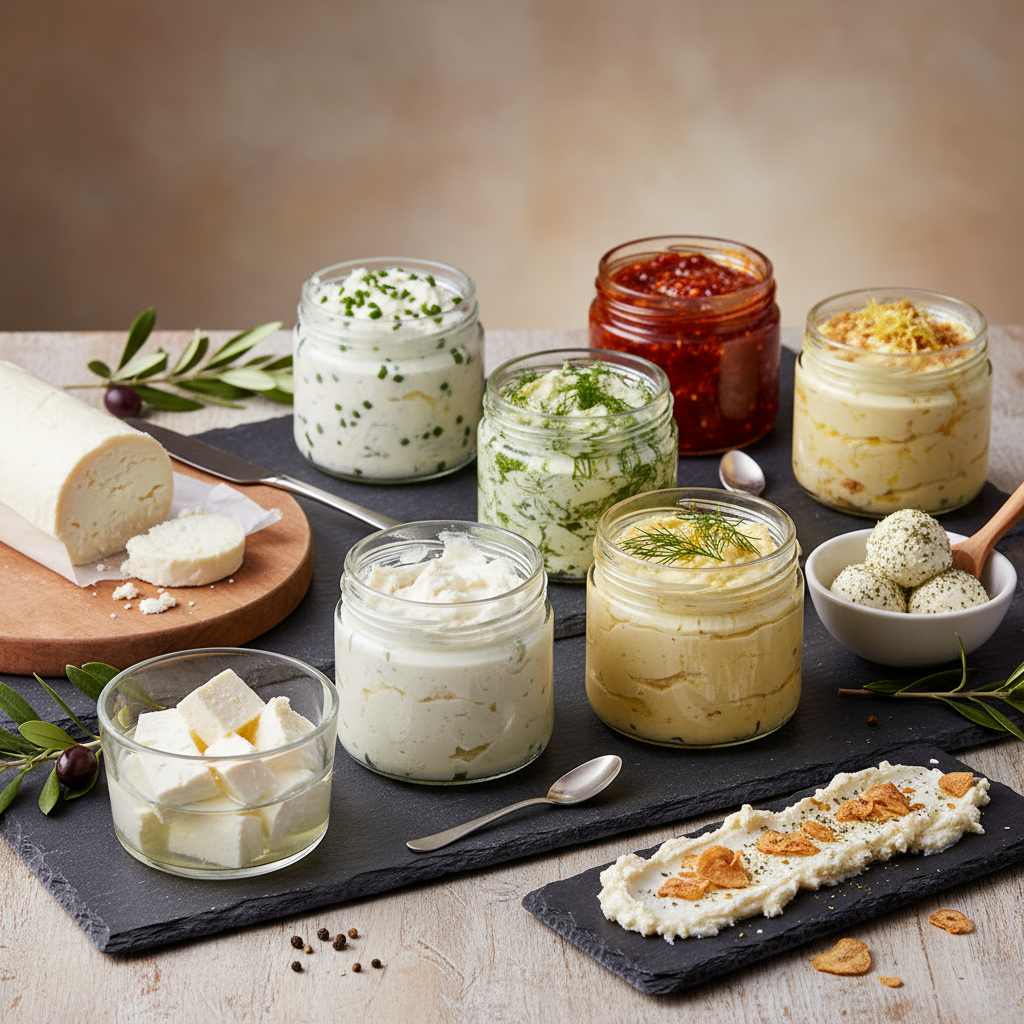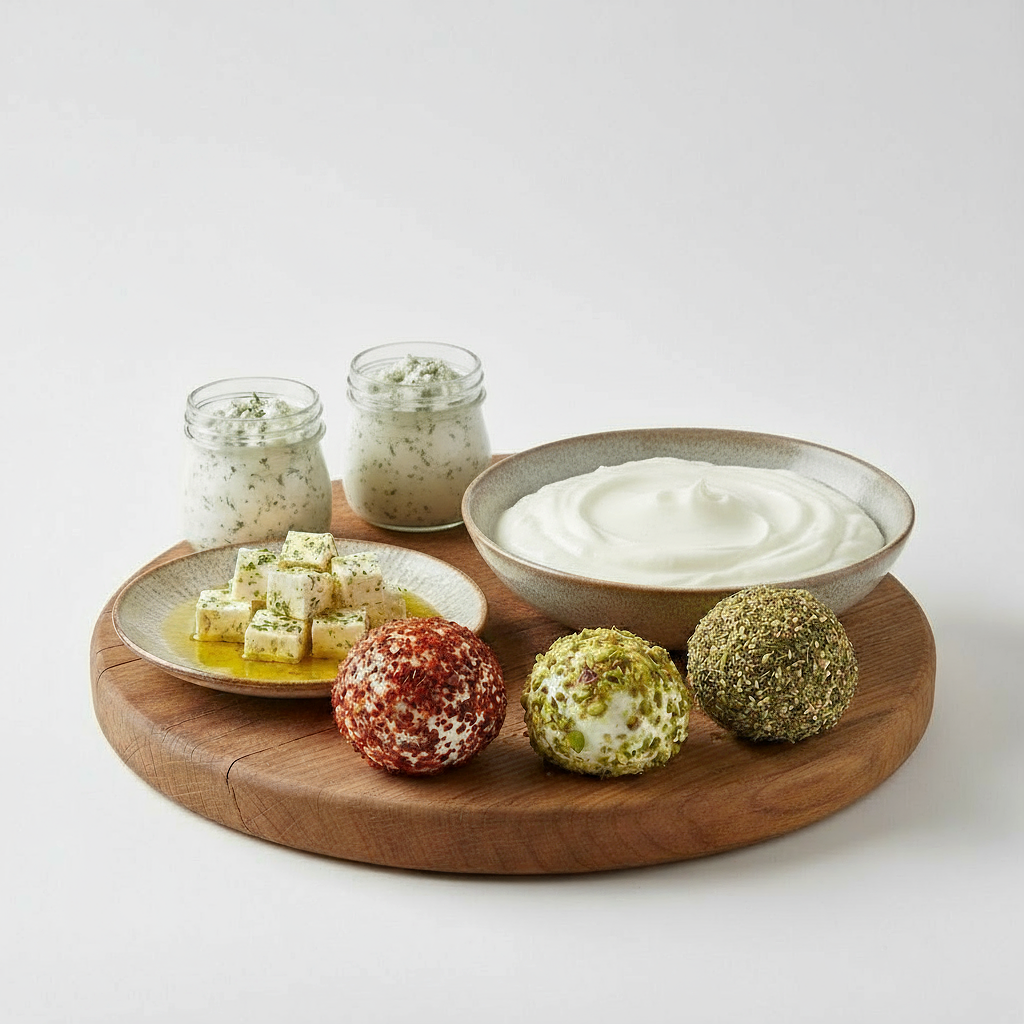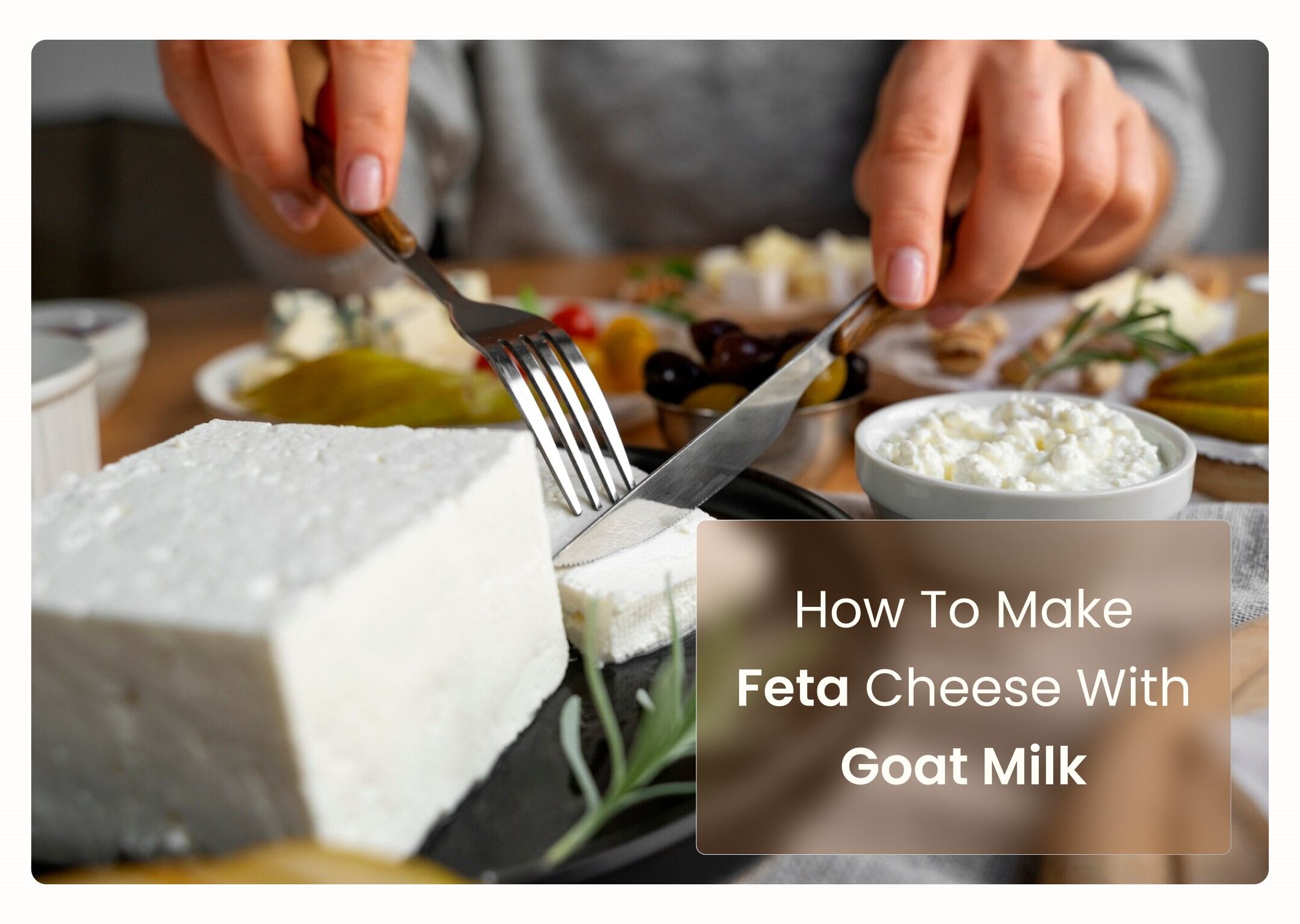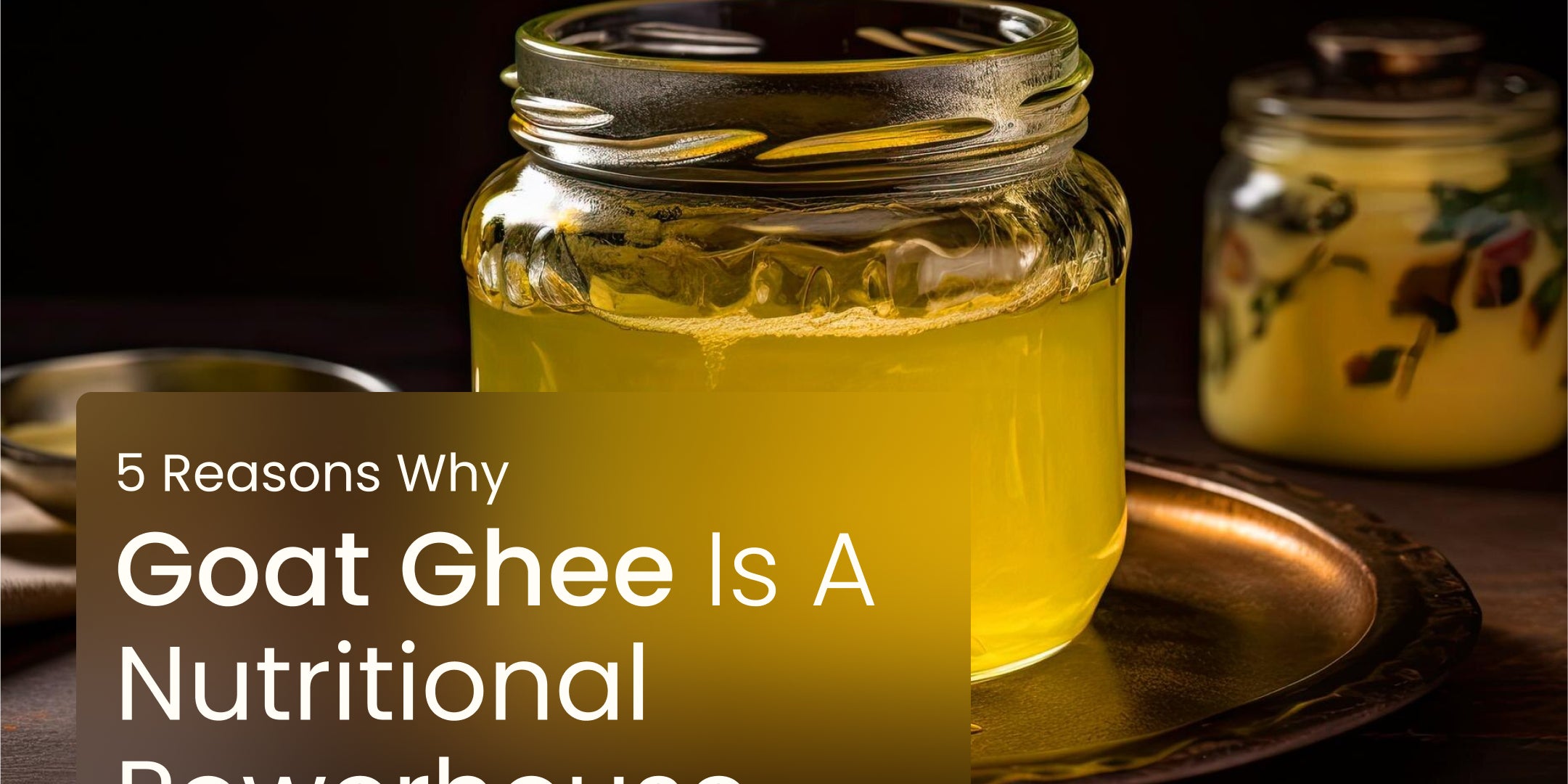Have you ever tried making your own feta cheese with the use of goat milk? It's less difficult than you watched! Follow our simple manual to convert goat milk into creamy, scrumptious feta cheese proper in your kitchen. Courtyard Farms stocks each step with you, from heating the milk to the very last salting. Whether you are new to cooking or simply trying to strive for something new, this approach will upload a sparkling, self-made contact on your meals.
Ingredients You Need
- Goat Milk
- Mesophilic Starter Culture
- Rennet
- Salt
Equipment Required
- You will need a large, sturdy pot to keep the milk warm. The pot needs to distribute the heat evenly to prevent the milk from burning. A stainless steel pot is recommended as it does not react with milk.
- A digital or dial thermometer is essential. Making feta cheese requires precise temperature control, and a thermometer will help ensure you keep the milk at the right temperature throughout the process.
- To remove the clay from the cheese, you need cheesecloth or a fine paste of butter. It should be fine enough to handle a load of curd and thick enough so that curd doesn’t escape.
- Use a basket mold to mold your feta cheese so it can absorb moisture. These molds aid in the production of cheese by shedding excess soil.
- A yogurt cutter or long blunt knife is needed to cut the yogurt into cubes, which is an important step in melting the feta cheese
- A slotted spoon or ladle made of stainless steel or other inert materials is suitable for gently stirring and stirring the yogurt without breaking it
- Curd is used to make cheese and the cheese is stored using a cooking box. Once it absorbs a lot of moisture and begins to grow, the box should be the right size to prevent the cheese from overflowing.
- You will need to remove the excess clay with a weight or cheese press to help the cheese harden, especially if you want firmer feta.
- For the technically inclined, a pH meter can be handy to ensure the acidity level is right for feta cheese development.
Related: 5 common questions about Feta
Steps To Create Feta Cheese
Step 1: Heating the Milk
Start by gently heating one gallon of pasteurized goat milk to 86°F (30°C). Use a thermometer to check the temperature because it’s crucial to get this right. Heating the milk to this specific temperature helps activate the cultures without destroying them, which is essential for the milk to set properly.
Step 2: Adding Cultures and Rennet
Once your milk is at the right temperature, mix in 1/4 cup of mesophilic starter culture. This step introduces live cultures that kickstart the fermentation process essential for turning milk into cheese. Ensure it's well incorporated by stirring gently for about a minute. Next, dissolve 1/2 teaspoon of rennet in 1/4 cup of non-chlorinated water, then add this mixture to your milk. Stir it briefly, for just about a minute, to make sure the rennet is evenly distributed, which is critical for coagulating the milk into curds and whey.
Step 3: Curdling and Cutting Curds
After adding the rennet, cover the pot and leave it undisturbed for 45 minutes. Check for a clean break by inserting a knife into the curd; if it splits cleanly, showing clear whey, it’s set. Cut the curds into 1/2-inch cubes both vertically and horizontally. This increases the surface area of the curds, helping them release more whey.
Step 4: Cooking and Stirring Curds
Return the lid and let the cut curds rest for about 5 minutes. Then, gently stir the curds for another 5 minutes at the same temperature. This careful stirring is critical to prevent the curds from breaking apart too much. After stirring, let the curds rest for 20 minutes, then stir again for 5 minutes to ensure the curds cook evenly and achieve the desired firmness.
Step 5: Draining and Molding
Using a slotted spoon, gently transfer the curds into a lined cheese mold placed over a draining rack. Allow the curds to drain naturally. After a few hours, flip the cheese in the mold to ensure even draining and shaping. Flipping is essential as it helps develop a uniform texture and prevents the cheese from becoming lopsided.
Step 6: Salting and Aging
Once the cheese has drained and firmed up, remove it from the mold. Generously sprinkle all sides with non-iodized salt. Salting the cheese helps draw out remaining whey, inhibits unwanted bacteria growth, and enhances flavor. After salting, the cheese can either be aged in a brine solution or dry aged depending on your preference. For brining, prepare a solution of purified water, non-iodized salt, a tablespoon of white vinegar, and a dash of calcium chloride. Submerge the cheese in this brine and store in a cool place like a refrigerator for up to six months, allowing the flavors to develop deeply.
Related: How to Use Goat Milk: 15 Ways to Use Goat Milk
Wrapping Up
Making your own feta cheese with goat milk is an exciting task, but it might seem tricky for some. If you're not ready to try this at home, no worries! You can easily enjoy the fresh and rich flavor of feta by Courtyard Farms' goat milk feta cheese. It’s readily available across India, bringing authentic taste right to your table without any fuss. This is perfect for salads or as a tasty snack, this cheese offers both quality and convenience. So, whether you are a homemaker or just someone who loves good cheese, Buy Courtyard Farms’s goat milk feta online for under 600 INR.
Related: Bullet Coffee With Goat Ghee, A Lifestyle Trend Having Numerous Benefits Of Ghee Coffee

